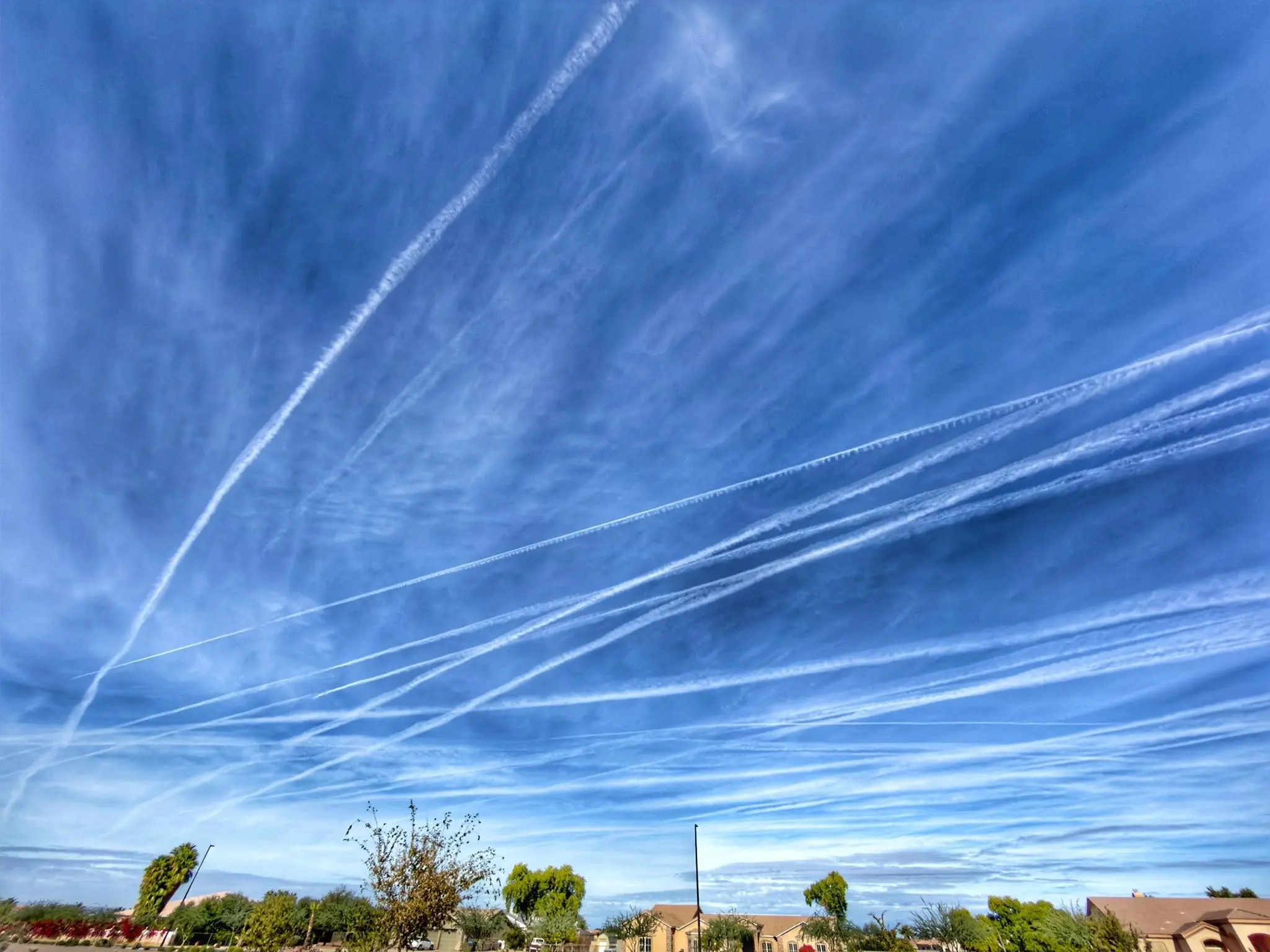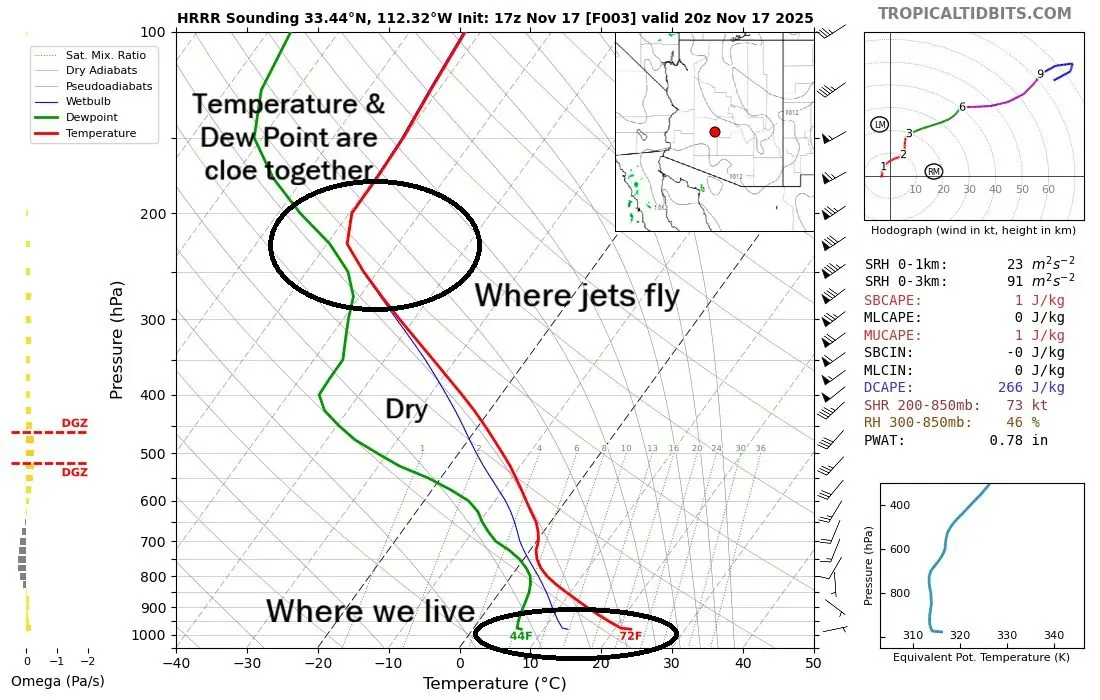A colleague of mine in Arizona had a plethora of emails the other day about how the Arizona skies were being poisoned with chemtrail spraying:

He finally had ENOUGH and put out this PERFECT example of what REALLY happens in the upper atmosphere.
Did you notice more contrails in the sky than usual today (11/17) over Arizona? It’s science, pure and simple.
It’s not because “the air traffic controllers are back to work.”
It’s not because “THEY” are spraying chemicals on us (Who is THEY anyway, and wouldn’t THEY be spraying themselves & their families if that were the case?)
It’s not because anyone is trying to manipulate the weather (you might have condensation trails confused with cloud seeding, which cannot create weather, only potentially enhance the precipitation potential of clouds).
Simply put, condensation trails (contrails) form when hot, moist exhaust from a jet engine mixes with the very cold, very dry air at cruising altitude. The exhaust adds water vapor to the air, which instantly freezes into tiny ice crystals—those white streaks behind an airplane.
Why so many on this day?
Contrails depend on the conditions at flight level, typically 30,000–40,000 feet, not what’s happening at the surface. Two things matter most:
Humidity and temperature
Low humidity → Ice crystals evaporate quickly → Short-lived or no contrails
High humidity → Ice crystals can’t evaporate → Long-lasting contrails
Very high humidity → Contrails can spread into wide, cirrus-like sheets
This humidity can change dramatically from day to day as weather systems shift.
Jet routes are usually in the -40°F to -70°F range.
If air is cold enough, ice forms easily → more contrails.
If it’s slightly warmer, or close to the threshold, you get fewer or no contrails.
The combination of cold + humid is the perfect setup for persistent contrails.
So Why More One Day Than Another?
Here’s a perfect answer WHY:

When the “red” and “green” lines (Temp/Dew Point) are close together, you have higher humidity. When this occurs at flight level, you will have more CONTRAILS NOT CHEMTRAILS!!!
Because the atmosphere at 30,000–40,000 feet changes constantly. For example:
A moist upper-level trough or jet streak passes overhead → humidity spikes → big, persistent contrails day.
A dry upper ridge moves in → humidity drops → almost no contrails.
Temperature at cruise level warms or cools a few degrees → changes the threshold for ice formation.
Bottom Line:
Contrails are simply engine exhaust turning into ice crystals, and they vary from day to day based on upper-level temperature and humidity. When the upper troposphere is cold and moist, contrails are widespread and long-lasting. When it’s dry or marginally warm, they barely form at all.





